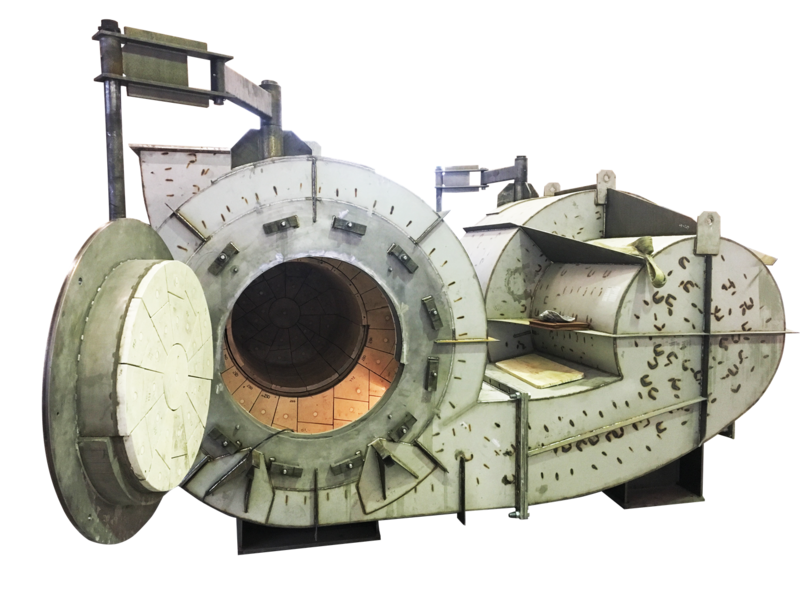A burner dries very finely grained aluminium silicate at some 900°C before the transported material enters the actual dryer with its temperature remaining at around 600°C. The drying system consists of a linking section and two drum-like drying chambers arranged in line one behind the other, followed by an outlet. In combination with the high temperature, the fine and highly abrasive material being transported produces an effect akin to sand-blasting inside the drying chamber. In addition, there is also a large temperature differential between material entering and exiting the system.
Initially the only protection for the drying plant was provided by metal wear-protection sheets embedded inside the equipment, which needed to be replaced in a complicated procedure after only a few weeks. The client sought a wear protection solution which could guarantee reliability of operation for up to six months and which could also withstand the starting and shutting-down of the plant. Working closely with the client, Kalenborn designed a multi-layered wear-protection lining. This consisted of a full-coverage outer layer of KALCOR, which provides the main protection against wear, along with another wear protection layer underneath comprised of the KALCRET compound.
The individually tailored and shaped pieces of the ceramic KALCOR material are 30 cm thick and mechanically attached. The benefit: If individual KALCOR bricks should become worn, the KALCRET protects the insulation and the main stainless steel shell of the plant until the next short-term shut-down. During these regular intermediate repairs it is easy to mend the worn areas.
Detailed knowledge of the operating conditions in the plant has paid off well: It means that we can respond during maintenance quickly and competently. Moreover, the Kalenborn engineers got together with the client to produce a manual with instructions for installation and repairs. The solution has proven itself in operation. The time before the plant needs any unplanned repairs has been prolonged and it is now possible for the operator to plan any modifications in advance.
